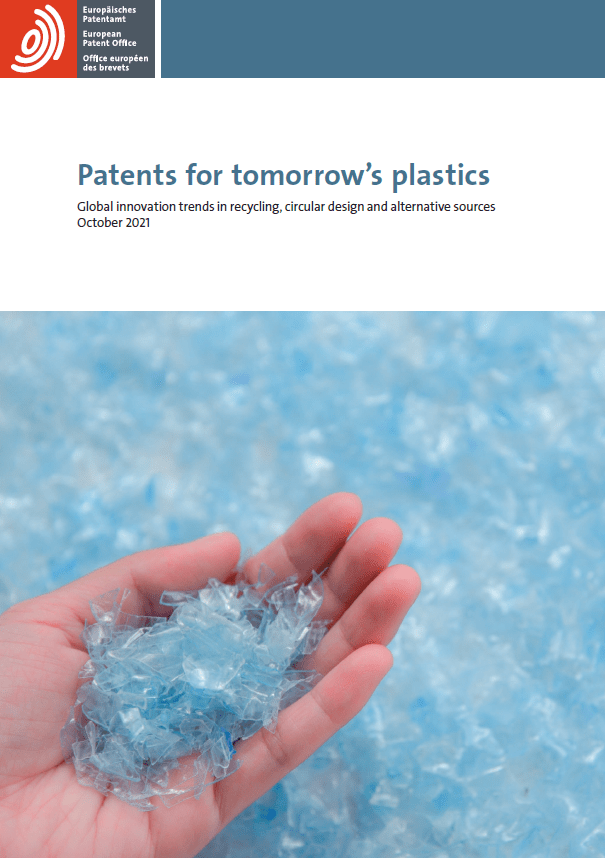Report on Inventions made in Europe related to circular plastics industry:
Executive Summary
Our heavy reliance on single-use plastics (SUPs) has long been of growing concern. The COVID-19 pandemic triggered a massive deployment of masks, gloves, disposable test kits, swabs, syringes and medical packaging – all made from SUPs. This is just one of many instances illustrating the tension between the social benefits of plastics and the pollution that they cause.
Over the past 70 years, plastics have become an essential material for many industries and indeed for the economy. However, there is growing awareness of the dire environ-
mental cost of this economic success. Today, the bulk of plastic production ends up as waste dumped in the environment, posing a critical and often immediate threat for countless endangered species, ecosystems and dependent socio-economic systems all over the planet.
The systemic challenge raised by this environmental crisis lies at the heart of the EU Green Deal (European Commission EC, 2019) and of the United Nations (UN) 2030 Sustainable Development Goals. To cope with the growing volume of plastic produced, used and dumped in today’s linear economy, the plastics industry has to transition into a fully circular model, where end-of-life plastic products are not discarded as waste but instead become a source of value creation. Innovation, regulation and international collaboration are needed to enable this transition. Progress in technologies related to waste recovery and transformation is crucial to support the systematic recycling of plastic waste and to maximise the value derived from it. Dominant technologies
in the plastics industry often reflect a linear-economy focus on performance and durability. Nevertheless, further innovation in alternative plastics and designs can also foster the reusability, recyclability and biodegradability of plastic products, or even eliminate the need for plastic usage.
Aim of the study
Aimed at decision-makers in both the private and public sectors, this report is a unique source of intelligence on these technologies and the technical problems they aim to address. The report draws on the latest patent information available and the expertise of European Patent Office (EPO) examiners to provide a comprehensive analysis of the
innovation trends driving the transition towards a circular economy for plastics.
Patent information provides robust statistical evidence of technical progress. The data presented in this report shows trends in high-value inventions for which patent protection has been sought in more than one country. (IPFs 1). It highlights technology fields that are gathering momentum and the crossfertilisation taking place. Trends in circular plastic innovation have never been more important to the sector’s development. Therefore, it provides a guide for policymakers and decisionmakers to direct resources towards promising technologies, assess their comparative advantage at different stages of the value chain and shed light on innovative companies and institutions that may be in a position to contribute to long-term sustainable growth.

